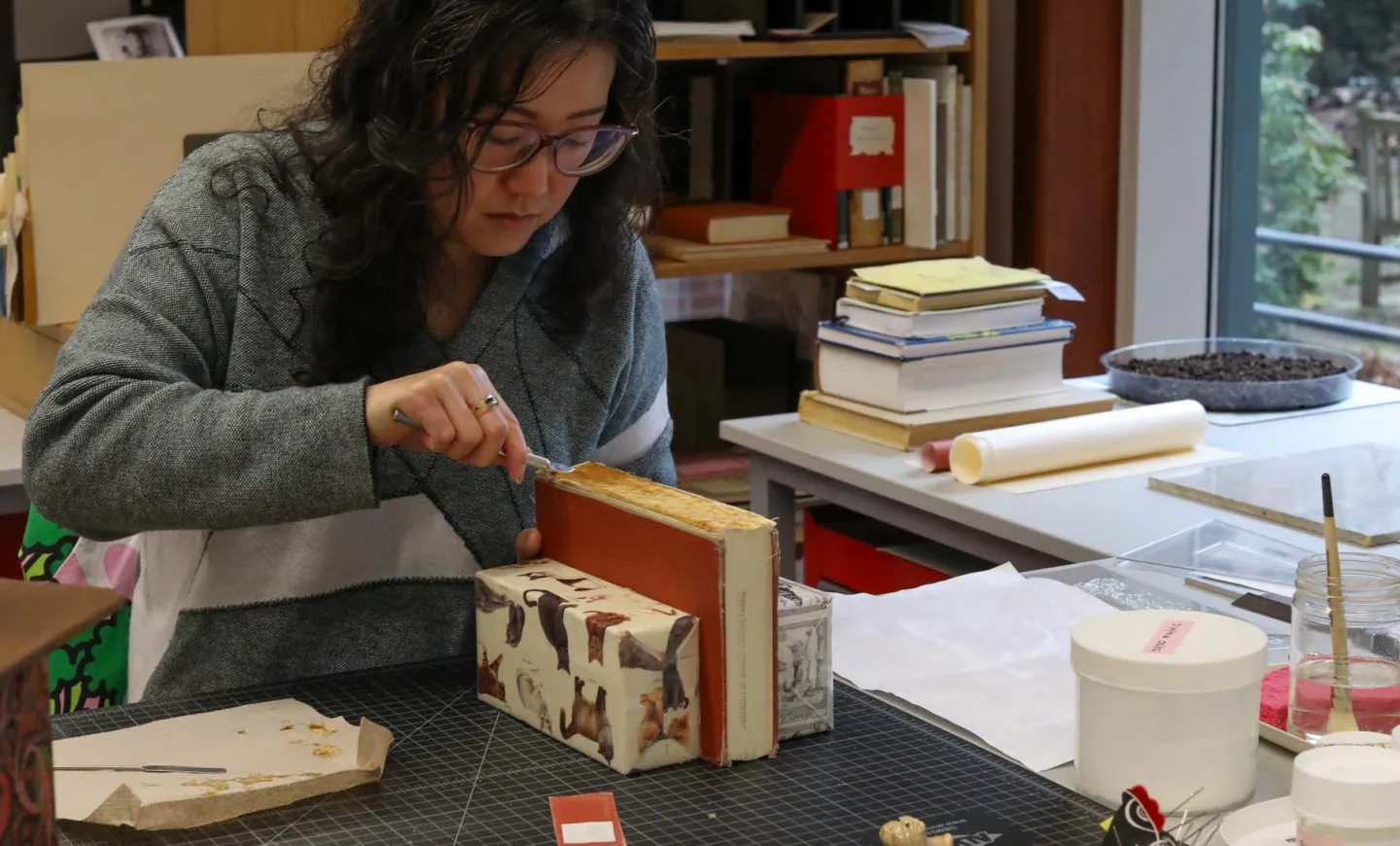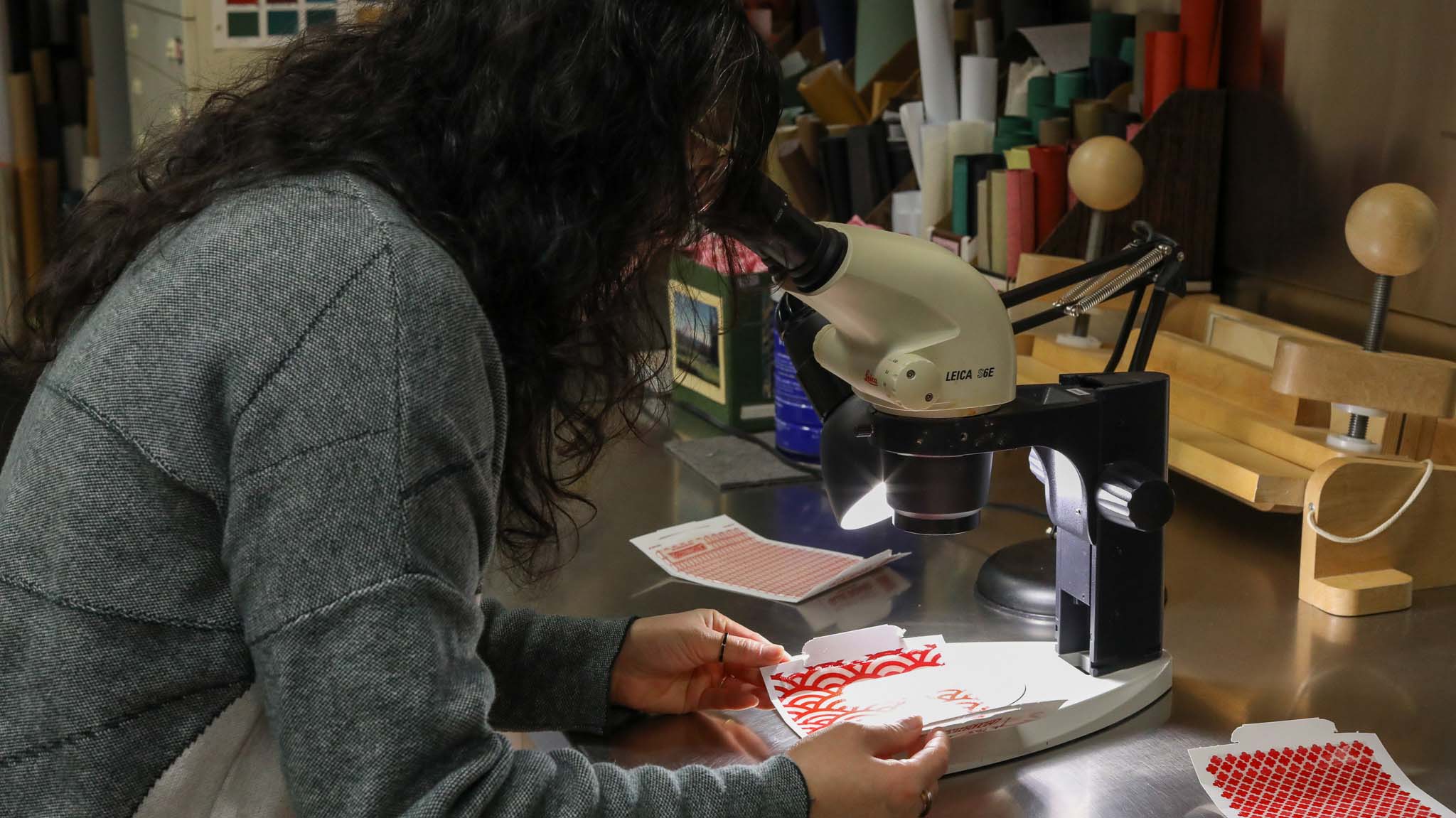The Beach Conservation Lab: Where Science, Art and Bugs Play Roles in Preservation

Every day, tucked in the southwest corner of Knight Library’s first floor, the Frank L. Beach Memorial Conservation Laboratory team works to repair books, make exhibit case models, monitor the library’s environment and preserve other materials from coins to photographs.
While very detail-oriented and specific, the lab’s work can apply to many different fields such as art handling, exhibit design and photograph conservation.
The lab is run by Lead Conservator Victoria Wong ‘07, a University of Oregon alumna who first worked in the Beach Lab during her education at the UO and rejoined in March of 2024. As lead conservator, Victoria sorts through the materials they receive, participates in professional groups such as the emergency planning committee, repairs materials and prepares exhibits for Special Collections and University Archives.
Student Spotlight—Alaina Kucera

Alaina Kucera is a senior majoring in art and technology who has worked in the lab since her sophomore year. When looking for on-campus jobs, she knew she wanted to work with her hands in a creative way. She had always been interested in library work, which led her to the Beach Lab. Alaina likes that there are so many different things she gets to work on, and how specific everything is.
“Getting to make something that feels so simple but is so unique to each book is really nice…learning more and more about the fine details that you just wouldn’t think about," Alaina said.
Being able to repair books that come to her falling apart and make them usable again is incredibly fulfilling. When repairing a book, Alaina will often do something called rebacking—removing the broken spine of the book and putting a new one in its place, making the book look entirely new.
As someone with a passion for art, Alaina feels that being in an environment that prioritizes the safekeeping of artwork is special. She plans to pursue preservation after she graduates so she can continue working with and protecting historical art pieces.
Real-Life Bookworms (Well, Technically Book Bugs)
Another ongoing project for Alaina and Victoria is monitoring pests in the library. The presence of bugs in a library is completely normal. These bugs generally include small arthropods like silverfish and springtails. Recently, they have seen record numbers of western conifer seed bugs (Leptoglossus occidentalis), which is uncommon for the library.
Victoria clarifies, “It would be really weird if no bugs came here…even hospitals and other sterile places have indoor bugs …this monitoring helps us get an idea of what is normal so that we know when something is atypical.”
The material within Special Collections is very valuable, so tracking insect movements and the environmental conditions is important. This process involves multiple steps:
- Setting up sticky traps to attract the pests
- Collecting and replacing the traps monthly
- Identifying the bugs: what species are present, when they show up, and what they are attracted to
- Comparing data over time to determine what is typical and what environmental changes or internal situations may be impactful
Calling all Scientists!
Along with catching bugs, there are a lot of things that happen in the lab that people don’t generally know about. Victoria emphasizes how much science goes into the work they do:
“The finished product is what you do with your hands, but it’s informed by doing scientific testing and analysis on an item so you can understand what you’re working with.”

Everything down to the paper a book is printed on, or what kind of ink was used, affects the method of preservation. Victoria notes that while most of the material from the Special Collections and University Archives is books, they also contain paintings, photographs, and other materials—all require different approaches for how they are handled and stored.
A multitude of collections are housed in the UO Libraries, some of which have had limited information gathered on them. More scientific analysis of these collections could help inform Victoria and Alaina about older collections.
Victoria invites UO faculty members to join her in these efforts. “If there are any professors or grad students who’d want to do [scientific analysis] with me, I’d love to find some special collection items for analysis.” (Contact Victoria Wong.)
From bug collecting to book rebinding, the Beach Lab team works hard to keep the UO Libraries collections preserved for Oregon and future generations of Ducks.
The Beach Conservation Lab was made possible by a gift from Ms. Sally Altick, given in memory of her father, Frank Beach. Ms. Altick gave the gift with the purpose of making it possible for the library to purchase equipment designed to help preserve collections and restore research materials.
For more information, check out Beach Conservation Lab on the UO Libraries website, or go to their Instagram.
